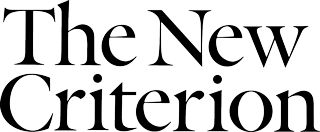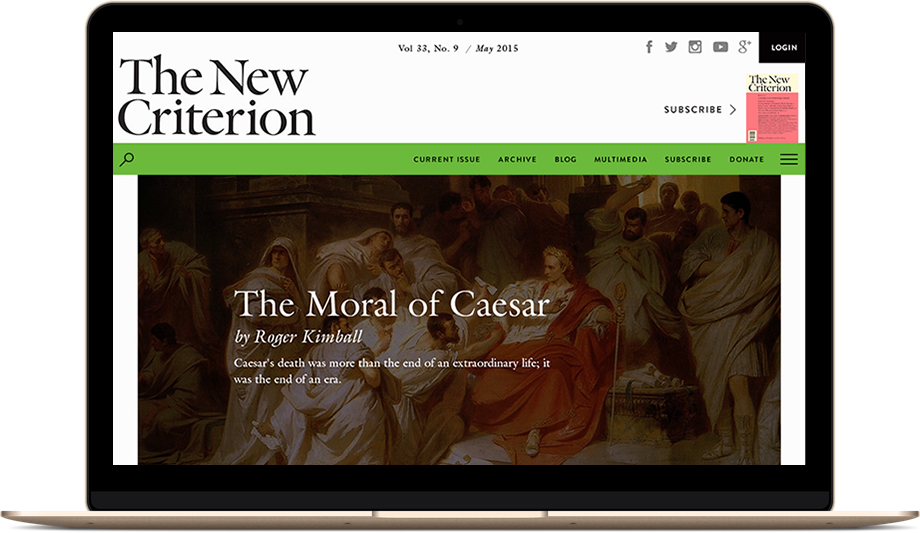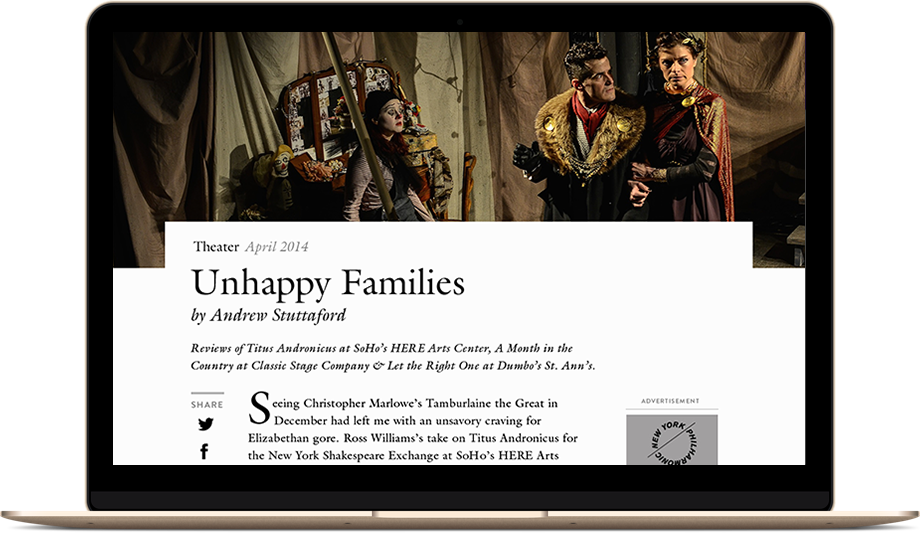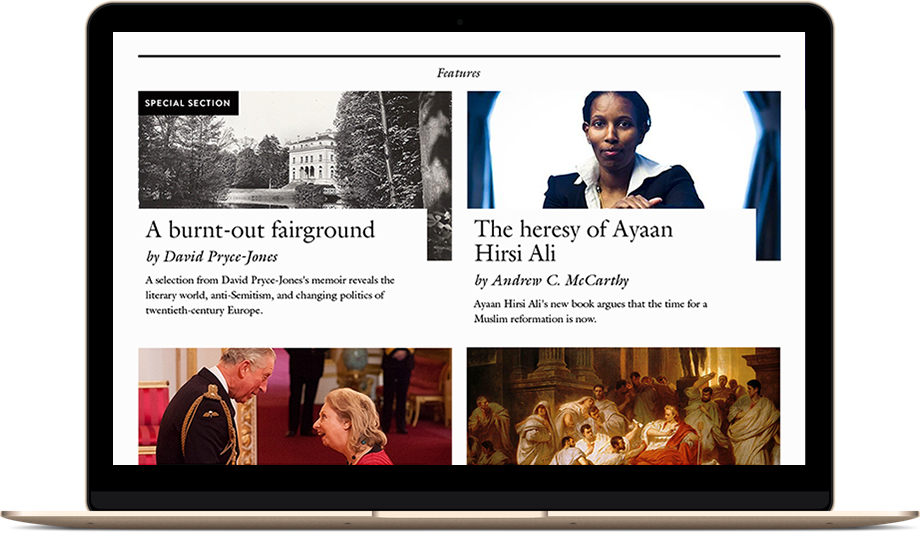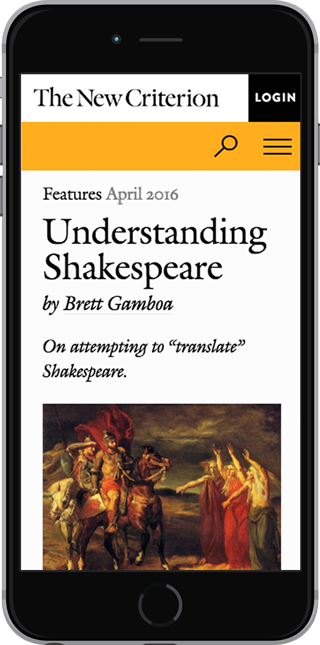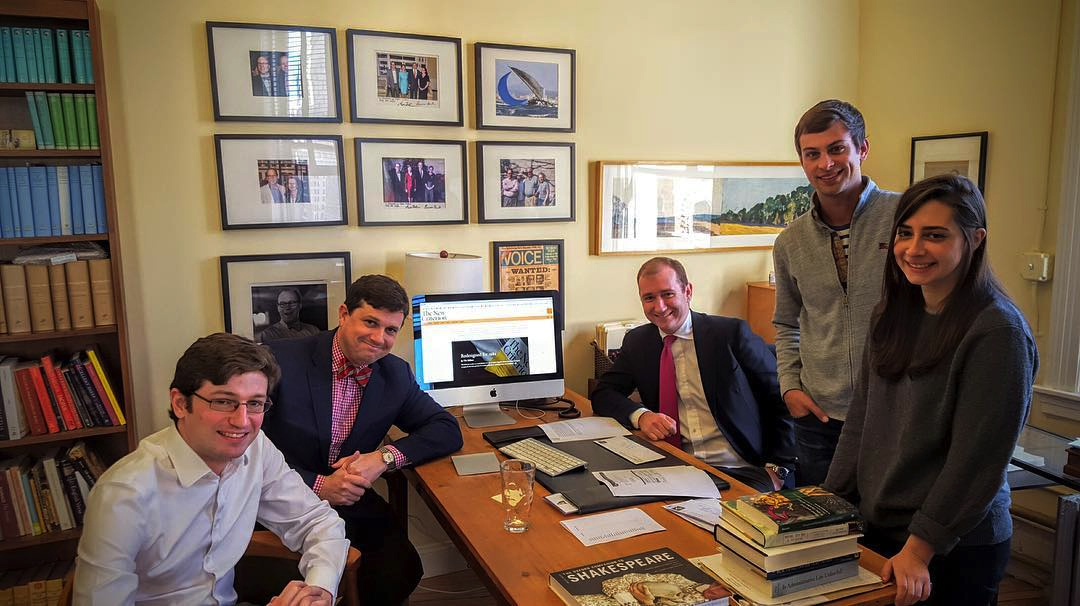The New Criterion is an esteemed journal that for 35 years has been leveling civilized criticism on the Western world’s arts and culture. Its brand aesthetic matches the editorial content it surrounds: smartly dressed, well-informed, and classically charming. The printed edition is the crown of the brand, the summation of its unwavering visual identity, primarily in the usage of Matthew Carter’s “Galliard” typeface as the house font.
But the journal’s website did not carry the brand’s positive associations. Digital subscriptions had plateaued, and monthly traffic was steadily declining. The New Criterion’s leadership decided it was time to get serious about their on-screen presence, making it match the quality of their printed edition.
“When we turned to the design of a new website for The New Criterion, we determined to make it even more like the magazine in print,” wrote James Panero, Executive Editor, at The New Criterion to us when recapping the project. “It was a mandate that went against all conventions—if there really are such conventions—of "proper" internet design, where every bell and whistle must be deployed to hold the attention of the distracted online reader. But just as The New Criterion dispenses with such frills in print, so too, we determined, would our new site.”
The direction was set, but after an unsuccessful engagement with a DC-based agency where the main complaint was the time it took to iterate and the tone deafness to the magazine’s brand legacy, The New Criterion became aware of the need for a more collaborative approach to seeing that vision come to fruition.
